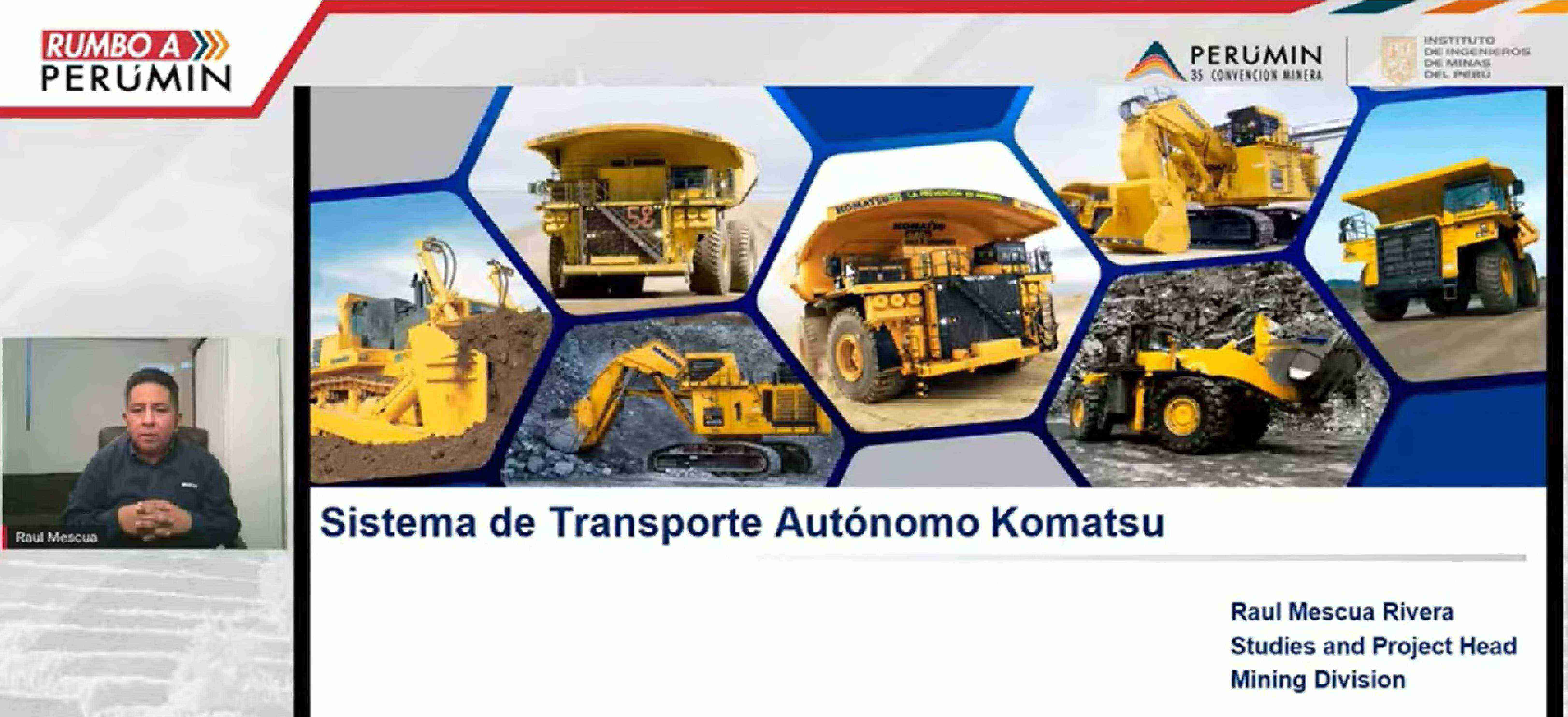LIMA, SEPTEMBER 22 2021 Autonomous transportation system revolutionizes the way a mine operates

Automation in mining aims to solve challenges such as people’s health and safety, the availability of water resources, CO2 emissions, productivity and respective costs, integrating people, processes and technologies, argued Komatsu-Mitsui’s head of Calculations and Simulations, Raúl Mescua Rivera, at Heading to PERUMIN.
"For more than 25 years, automation has evolved into levels of fleet management, assisted driving, anti-collision systems and remote operation. Today, the new level is driving mining trucks without the need for human intervention in the field," he added.
Komatsu-Mitsui implemented the first fleet of autonomous trucks in 2007 and has since built a track record of success with more than 350 vehicles of this class operating in the field and supporting change management in mining companies.
"Today we have 352 vehicles in various parts of the world, in 830E, 930E and 980E models. With this fleet, we provide safer, more reliable and consistent mining operations, while reducing operating costs and increasing production," he said.
The autonomous transportation system is made up of trucks, loading equipment, support equipment, a control center and a communications network. In addition, it also incorporates navigation and supervision systems, fleet management systems and a mining plan.
"When these trucks start operating, the whole work philosophy changes and a collaborative space is generated that aims to increase production and reduce the cost per ton of ore. In short, our autonomous transportation system is not simply the replacement of a manual operation, but the change of a new way of operating a mine", he highlighted.
Great benefits
According to Raúl Mescua, Komatsui-Mitsui’s autonomous transport system reduces people’s exposure to risk in the operation, avoids driver’s loss of concentration and fatigue, eliminates accidents and risky maneuvers, and ends the anxiety generated by the change of shift in the trucks.
"It also reduces operating and maintenance costs through the reduction of carbon emissions and fuel consumption, minimizes of tire wear, allows smaller fleet size, no cost associated with operators, reduction in infrastructure and longer life of components", concluded the technical representative.







